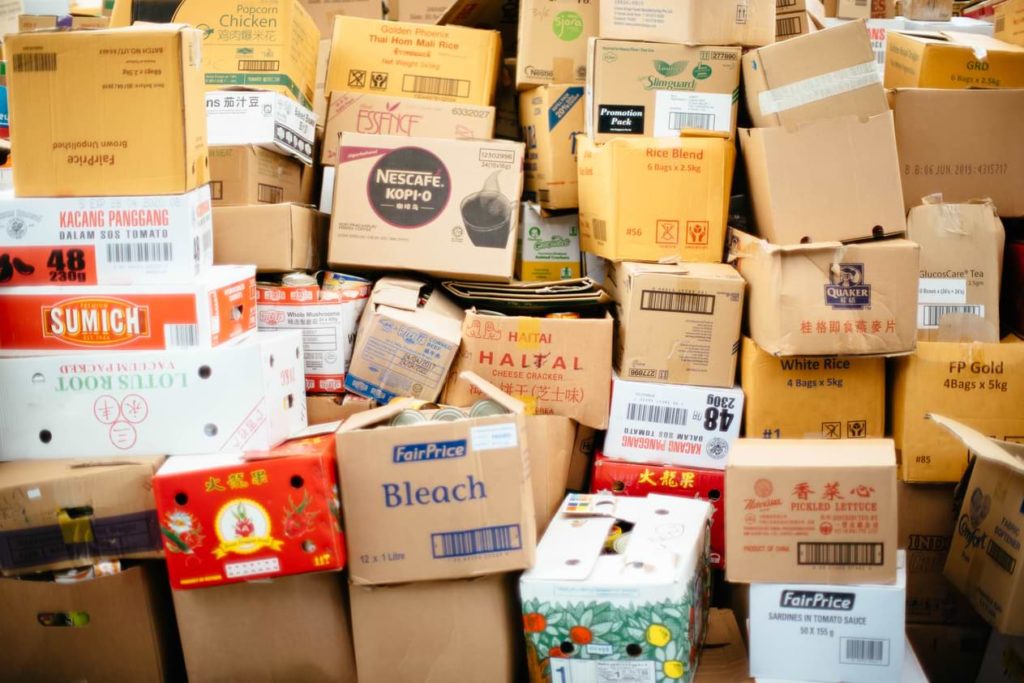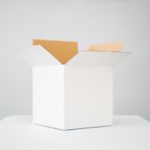[elementor-template id=”2044″]
With its versatility and many possible uses, it’s no surprise that cardboard is one of the popular choices for art projects. However, if you’ve ever tried painting on cardboard, you might notice that the color effects aren’t always what you’d expect – as is the quality of the cardboard after you’ve finished painting. Consider a shopee promo code to buy your preferred colors and get the desired finish your want.
In this article, we’ll explain whether or not you can use materials like oil-based, water-based, spray paints and more as good paint options to use on cardboard.
Before we begin, though, take note that if you’re planning to compost your painted cardboard or bits of it after your project, take note that it might be difficult or impossible to do, given that cardboard is biodegradable, but most paints are made with chemicals harmful to the environment.
Spray Paint – Yes, but with primers and other layers
Yes, you can use spray paint on cardboard. Most people are hesitant to use spray paint because they notice how cardboard warps easily. However, this is because when the spray paint is used improperly, the paint sinks down inside the cardboard. Because cardboard is paper-based, the moisture that sunk in will wet and warp the pulp from the inside, thus changing the way it looks on the outside.
You can still use spray paint, though, especially if you want to cover a large area and using a paintbrush is impractical or if you want a certain finish that only spray paints can provide. However, you need to be careful and use spray paint properly.
For your safety, use spray paint outdoors or in a dry and well-ventilated room to keep the toxic paint fumes from entering your body. If you want to avoid getting spray paint on the surface beneath the cardboard, place some newspaper or a tarp under it. As much as possible, wear a face mask while using spray paint to keep fumes from going into your nose and mouth. Shake the can for at least two minutes before first use to ensure that the paint mixes well and provides a vibrant color with every spray.
To keep the moisture from seeping in, start by holding the can at least 12 inches away from the cardboard. Spray a light first coat over the cardboard and wait for it to dry. If you don’t wait, your board may get saturated and the paint will start to seep. Let the paint dry completely before applying a second coat: it’s the same process, but this time, the first layer will act as a thin guard between the second coat and the cardboard. If two hours seems like a lot, use a paint primer (called gesso) instead.
Acrylic Paint – Yes, But Proceed with Caution
Water-based paints like acrylic paint are prone to easily warping cardboard because of its moisture. Even with a paint primer, if you try painting with a thick layer of acrylic, you could risk letting the water seep in. However, you can still use acrylic paint on your cardboard as long as you don’t dip your paintbrushes or sponges in water before and after using paint.
Some painters may feel uncomfortable using a dry brush to paint with acrylic. If doesn’t spread easily, bend and twist the bristles until they’re less stiff. Also, avoid squeezing out paint from acrylic paint tubes onto the cardboard as the excess moisture from a dollop of paint can cause moisture patches.
If you’re using gesso, the risk of warping your board will be a lot less. However, it’s advisable that you start with a thin first coat of paint and letting it dry before adding another layer.
Oil Paint – Yes, But Proceed with Caution
The same goes for oil-based paints: its moisture can warp cardboard if you use thick layers. Again, prime your cardboard with gesso and let it dry completely before putting on a thin layer of paint. Let that dry before adding another layer.
Watercolor Paint – No
Even with gesso, I wouldn’t recommend using watercolors on cardboard. Based on the name itself, watercolors require water to work. And even if you wait for every layer to dry before adding another layer of paint, it’s still very flat in appearance. You’re betting off painting on canvas where the board is designed to soak up watercolor.
Priming with Gesso
As much as possible, you’ll want to apply a layer of gesso over your cardboard. Gesso is a white colored acrylic paint designed to “prime” a surface for paints. While it is possible to paint over cardboard without gesso, gesso can give you two advantages: serve as a layer of protection from too much moisture from the paint seeping into the cardboard, and to make your colors opaque and have a brighter finish.
Many acrylic paint brands sell gesso, though some painters opt to make their own out of chalk (or talcum powder), white paint, white glue, and water. If you want a colored background for your painting, you can mix additional acrylic paint colors into your gesso. This will not affect its ability to serve as a primer.
To apply gesso, you will need a sponge or foam brush (or a simple sponge will do and apply two layers of gesso in a vertical and horizontal motion. Let the layers dry for about 24 hours before painting over it.
How to Fix a Warped Cardboard
Sometimes, you might accidentally put too much paint on your cardboard or leave it in a place with high amounts of moisture that will warp or curl your cardboard. If the damage isn’t too severe, there’s still a way to fix it.
- Dry out the cardboard until it is completely dry.
- Next, moisten the cardboard a bit (you can use a spray bottle – do NOT dip the board in water or it can get too soaked and the pulp will start to tear away).
- Lay your cardboard on a flat surface with the curled direction facing upwards.
- Place heavy objects (books, metal tools, wood pieces) over the cardboard until it lays flat.
- Let it dry for about 24 hours until it is completely dry or until the cardboard has completely flattened.
Cardboard can be a good material to work with, but it can be difficult to handle with wet media like paint. Some types of paint can be used as long as your careful, but keep the watercolors and water-based paints away from unprimed cardboard unless you want to spend the next few days trying to fix curled up cardboard.



